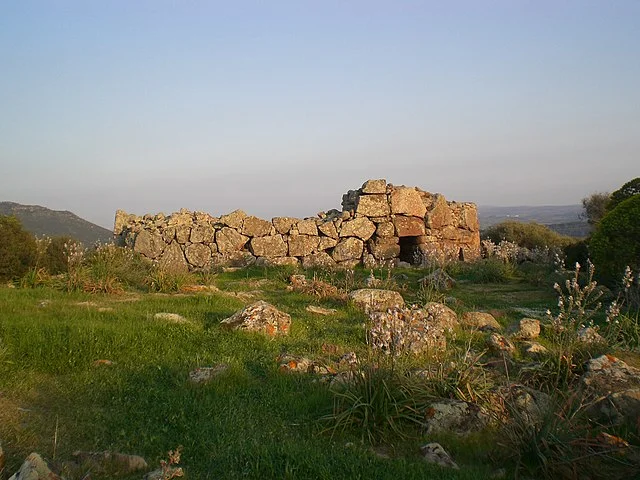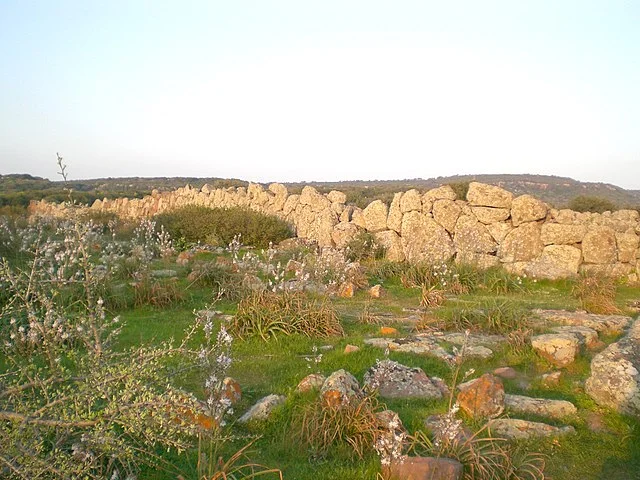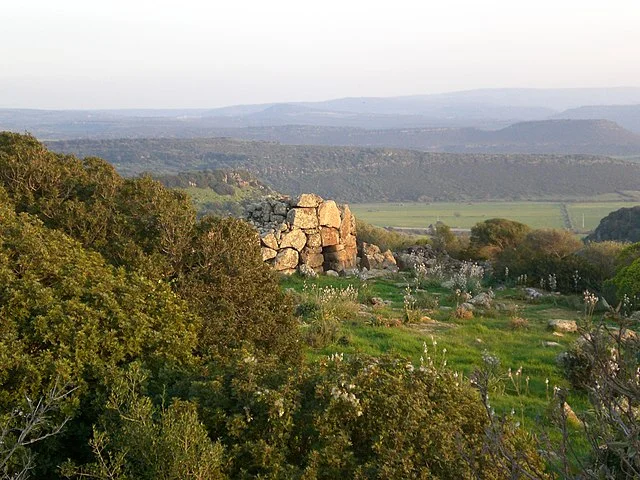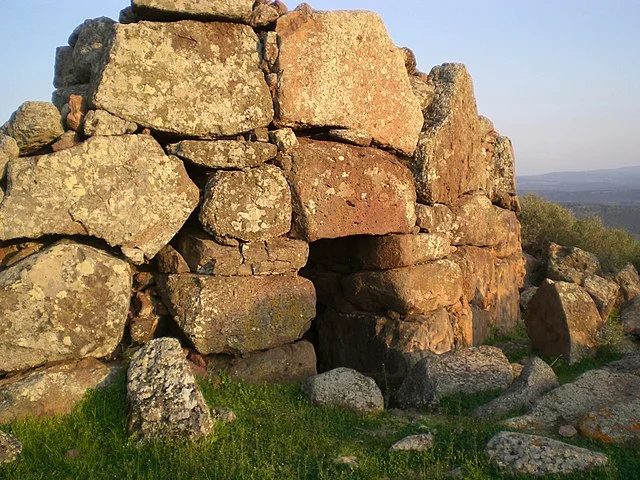Monte Baranta is an archaeological site in Sardinia, Italy, dating back to the Copper Age (circa 2500–1800 BC). The site is located near the town of Olmedo in the Sassari province. It offers significant insight into the early societies of Sardinia, particularly their architectural and cultural practices.
Get your dose of History via Email
Site Structure

Monte Baranta is primarily known for its megalithic fortifications. The most prominent feature is a large wall, built using unhewn stone blocks. This wall, about 4 meters wide and 4 meters high, encircles a large area of the plateau. The structure suggests the site may have been a fortified settlement or a place of refuge. Its construction demonstrates an early understanding of defensive architecture, designed to protect inhabitants from potential threats.
Inside the enclosure, archaeologists have found the remains of dwellings, circular huts, and evidence of communal spaces. These structures are indicative of a settled, agrarian community. The stone buildings had thatched roofs, constructed using local materials. The circular arrangement of the huts points to a community-oriented society, with shared spaces for social and ritual activities.
Ritualistic and Religious Aspects

In addition to its defensive nature, Monte Baranta appears to have had a religious or ceremonial function. The site includes a distinctive structure known as a “corridor tomb.” This type of tomb, built from large slabs of stone, is unique to the prehistoric cultures of Sardinia. It may have been used for communal burials, suggesting that the people of Monte Baranta practiced ancestor worship or other collective burial rites. The proximity of this tomb to the settlement implies that the inhabitants considered the afterlife or death rituals as central to their community.
Cultural Significance

Monte Baranta reflects the broader megalithic culture of Sardinia during the Copper Age. This period marked a shift from nomadic lifestyles to more permanent settlements. The site’s architecture and burial practices bear similarities to those found elsewhere in the Mediterranean, such as the Nuragic culture, which emerged later in Sardinian history.
Monte Baranta provides essential clues about the social structure, religious beliefs, and architectural skills of early Sardinian people. As one of the few well-preserved Copper Age sites in Sardinia, it holds immense archaeological importance for understanding the region’s prehistory.
Conclusion
Monte Baranta stands as a testament to the ingenuity and cultural development of Copper Age societies in Sardinia. Its fortifications, communal dwellings, and tombs reveal a society capable of complex construction and social organization. The site’s combination of defensive, residential, and ritualistic elements highlights the diverse functions it served in the life of its inhabitants. Monte Baranta continues to be a key site for researchers studying early Mediterranean civilizations.
Source:

